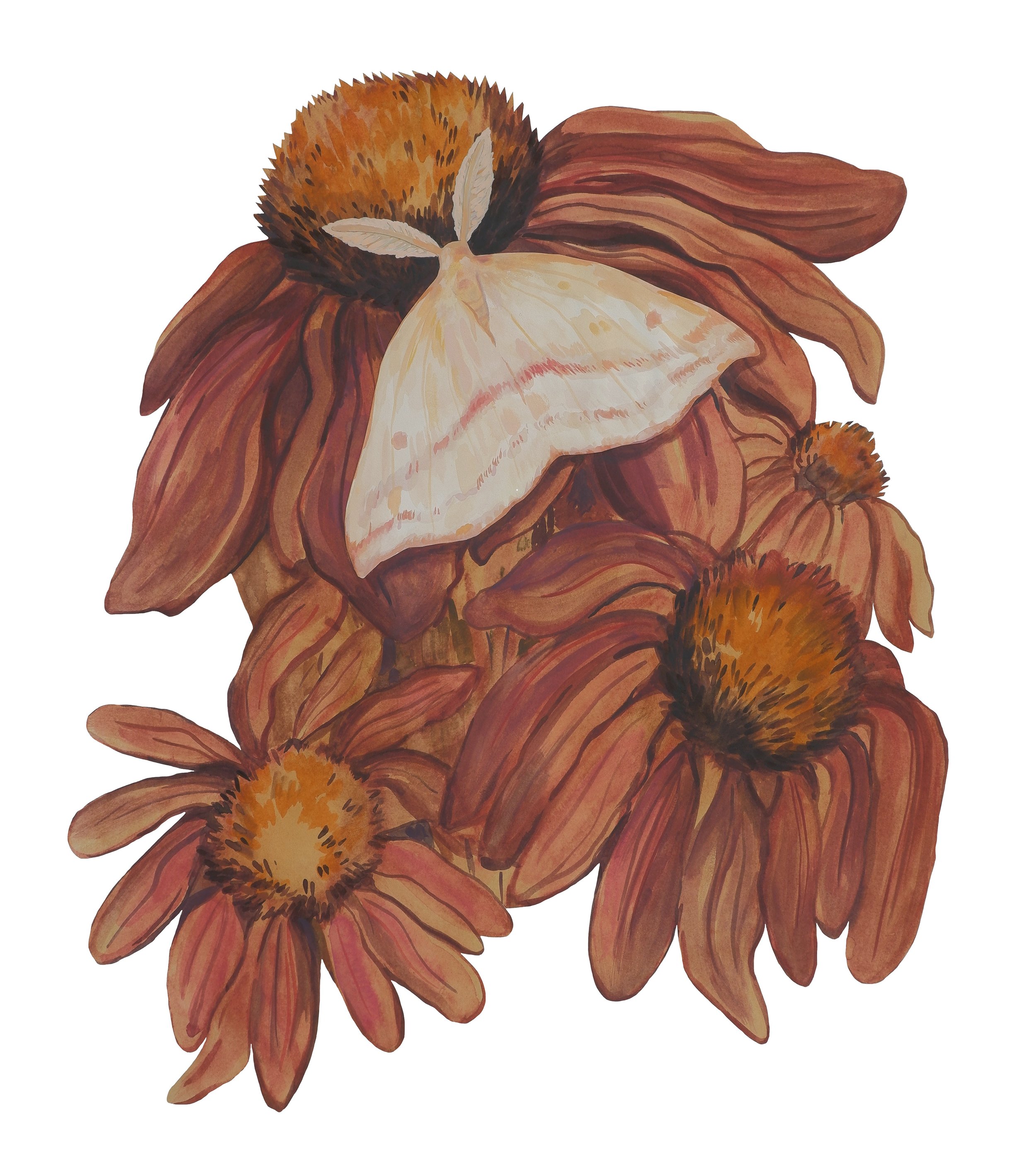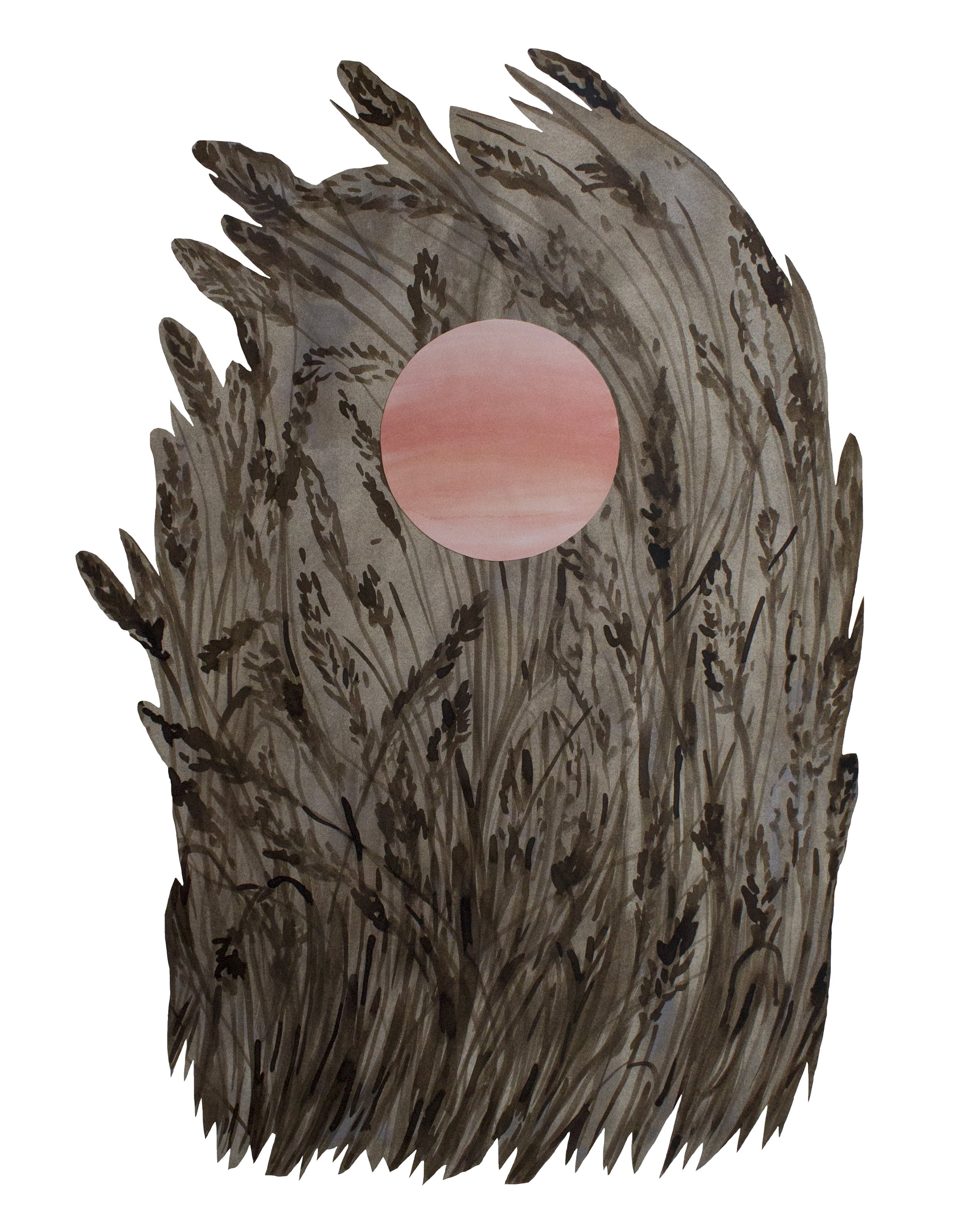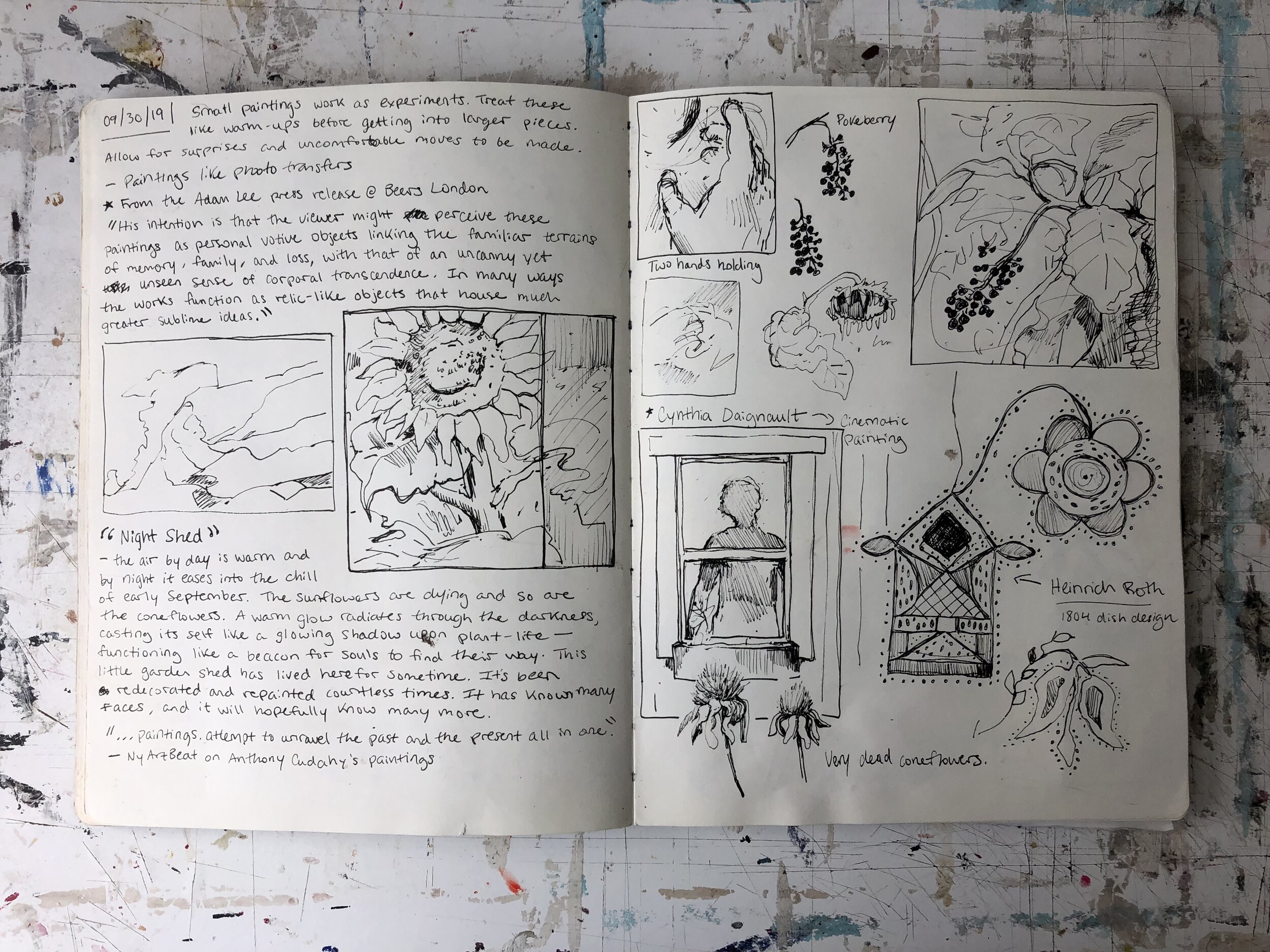The definition of gardening (a noun) is “the activity of tending and cultivating a garden, especially as a pastime.” The three key words that stand out to me within the definition are ‘tending,’ ‘cultivating,’ and ‘pastime.’ As a gardener, I’m a cultivator of place, the garden being the physical space I tend to daily. It’s a world of my own making, where containers cover concrete slabs, and inside those containers, a biodiverse ecosystem exists because I planted it there. In a way, I’m playing plant-God… if you build it, they will come… (an iconic line from the film, Field of Dreams). I hear those words every time I see a butterfly or a bee visiting one of my flowers, or a caterpillar munching on the leaves of its host plant.
The word ‘pastime’ sounds a bit like when someone calls a non-professional artist a “Sunday painter,” a phrase for someone who makes art as a hobby, ie, a pastime. That phrase also links directly to gardening, because many “Sunday painters” are people who paint plants or landscapes as their subject matter. Their focus is on capturing beauty, and not much else. And in the current state of the world we’re all living in, I take no issue with that. A snotier artist or academic might, but that’s not something I worry about much these days. Finding beauty and joy through gardening and painting is more important than ever.
June 2025, in the garden with Pickle, right before the 100 degree heatwave hit.
I accept that gardening is a pastime, but I view it to be greater than that word allows it to be. Gardening is a purpose, a place, it is a means to escape, to dream of tomorrow, to play, to understand life cycles, to challenge oneself, to be present in a world that begs us to stare blankly into screens, and so forth. I could proselytize about the importance of gardening for days. And that’s why I’m carving out this space here, to give admirers of my work a place to understand it. It also helps me process what I’ve been working on for the last 6 months.
In January, I started oil painting again after a nearly 4-year hiatus. The outcome of the election propelled me into this new body of work. I felt the strong desire to make big, vibrant paintings of my urban garden deep in my bones. My garden is my act of good in the world around me, where so much bad happens daily. It’s the one thing I can hold onto, and contribute to, and it serves bugs, birds, and people alike on my street. Even the smallest gardens have an impact. It is a place of aesthetic beauty, but it is also a Monarch butterfly waystation. To sum it up, it’s a pastime with a purpose. Bringing it back to Field of Dreams, sometimes you’re compelled to create something you don’t fully understand until you do it, and then the real magic happens.
Which brings me to the work itself: what am I making exactly? There are five paintings made so far (with more on the way), three of which I consider finished. Each painting is conceived from a lived moment in my garden: watching a velvety-orange pumpkin blossom bloom in the morning, then wither by mid-afternoon. A bumble bee nectaring at a mountain mint flower (my favorite native perennial, and a gift from my neighbor). Two white dahlias in peak bloom, towering and elegant, I painted them like a portrait of two people. Then there’s the pair of supersized swallowtail butterfly caterpillars, mirroring one another on a stem of fennel; and lastly, ripening red raspberries whose leaves have been eaten by an anonymous tiny caterpillar. The paintings are a part of a new body of work and show titled, To Grow Something Good. I will debut them in early September, alongside a selection of functional ceramics.
Four oil paintings in progress.
Making ceramaics with my friends.
My little painting muses, swallowtail butterfly caterpillars on fennel.
Pickle in the studio.
The finsiged swallowtail caterpillar oil painting.


















































































